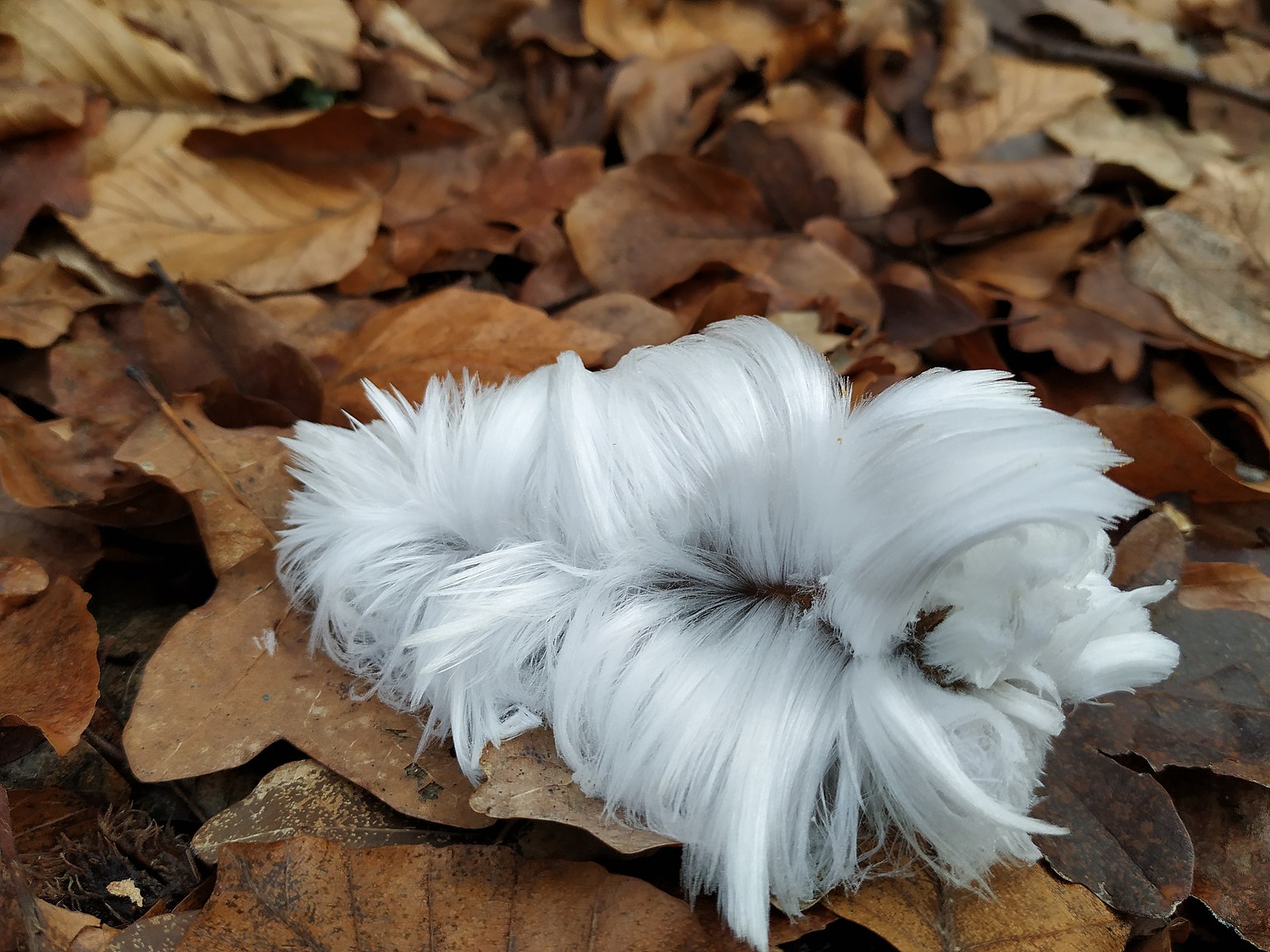Science & Technology
Hair Ice
Cody Sung
Volume 4 Issue 1
November 6, 2023

Image provided by Hair ice: By Vielfalt - Own work, CC BY-SA 4.0, https://commons.wikimedia.org/w/index.php?curid=98907791 Fungus: By Jerzy Opioła - Own work, CC BY-SA 4.0, https://commons.wikimedia.org/w/index.php?curid=38872654
Have you ever heard of hair ice? It’s silky, elongated, reminiscent of hair. It shouldn’t be able to exist since recrystallization, which breaks the shape, should happen very quickly. And yet it doesn’t. When and where can you find it? How does this happen?
Hair ice is a rare phenomenon to encounter. It is only found on dead wood in forests between the latitudes of 45 and 55 degrees north, encompassing the forested parts of the northern United States, such as Washington, Montana, Idaho, the Dakotas, Minnesota, and Maine, southern Canada, most of Europe, and southern Russia – you can find it in a lot of places around the world, but not in New York! However, it only forms in these forests when the temperature is just below freezing (32 degrees Fahrenheit or 0 degrees Celsius) and if it is humid – wet - outside. The ice produced by the wood, hair ice, is thin and silky, forming curls and waves reminiscent of its namesake human hair. Due to its unique shape, it is very brittle, more so than actual ice. Despite the odd shape and how fast recrystallization happens at the temperatures it forms at – it should happen within minutes - how does hair ice stay as it is for up to days at a time?
The dead wood has a fungus, Exidiopsis effusa, usually found in hair ice. German and Swiss researchers in 2015 noted that every hair ice sample they found had the fungus on it, indicating that the fungus was the cause of the hair ice phenomenon. Interestingly enough, the possibility of a fungus making ice was proposed over a century ago by the discoverer of continental drift, Alfred Wegener. Unfortunately, the dead wood the fungus lies on cannot produce hair ice for that long; it can only do it for a few years, still an impressive period. The fungus can do this by being on a piece of dead wood and waiting until conditions are right and ice starts to grow on the wood. It can then release recrystallization blockers, so the ice doesn’t immediately recrystallize. However, this process remains mostly a mystery. As a fungus causes it, hair ice on a piece of dead wood is disabled. Additionally, the researchers found hot water has the same effect. However, this has the potential for further exploration.
Sources
“Hair ice”, Wikipedia, https://en.wikipedia.org/wiki/Hair_ice
“Exidiopsis effusa”, Wikipedia, https://en.wikipedia.org/wiki/Exidiopsis_effusa
“45th parallel north”, Wikipedia, https://en.wikipedia.org/wiki/45th_parallel_north
“55th parallel north”, Wikipedia, https://en.wikipedia.org/wiki/55th_parallel_north
